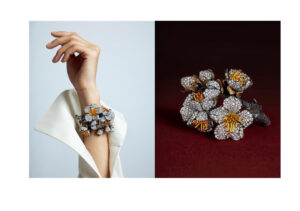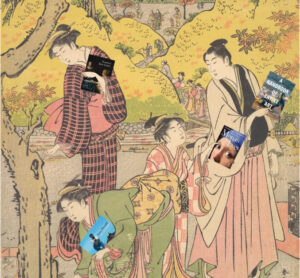Featuring the Leonard & Louise Riggio Collection and Landmark 20th Century Sales
As the art world approaches a pivotal moment in the calendar, all eyes turn toward New York and the exhibitions opening at Christie’s Rockefeller Center galleries. The May season, long considered one of the most consequential for global collectors, dealers, and institutions alike, will be defined this year by exceptional offerings across 20th and 21st century art. Leading the charge is the upcoming Spring Marquee Week of sales, featuring museum-quality works, historically significant collections, and fresh-to-market masterpieces.
Among the standout presentations is Leonard & Louise Riggio: Collected Works, a deeply personal and scholarly collection amassed over decades by two of America’s most committed and discerning collectors. The collection anchors Christie’s 20th Century Evening Sale on May 12, but its cultural and curatorial significance stretches far beyond auction value.
The Riggios’ Vision: Collecting with Conviction
Leonard Riggio—best known as the founder of Barnes & Noble—and his wife Louise began collecting with an ethos rooted not in prestige, but in personal engagement. Their approach was unpretentious but exacting: the works in their collection were lived with, studied, and revisited over time. What emerges from the 39 pieces on offer is not simply a survey of modernism’s canonical names but a tightly edited view of its emotional and intellectual power.
The selection includes seminal works by Piet Mondrian, Pablo Picasso, Alberto Giacometti, René Magritte, Mark Rothko, and Gerhard Richter—artists whose impact has defined both the aesthetics and philosophy of the 20th century. These are not casual acquisitions; they are committed investments in meaning and form.
In Mondrian, the Riggios found balance and architectural discipline. In Rothko, they found atmosphere and transcendence. Their collection demonstrates a deep sensitivity to how works speak to one another—not just as trophies, but as nodes in a conceptual web.
Museum-Caliber Quality, Market Rarity
The quality of the Riggio collection stands on par with institutional holdings. Several works have been loaned to major museums over the years, and their provenance adds additional weight to already significant pieces.
Christie’s specialists have emphasized that the sale is not just an opportunity for top-tier collectors to compete at the highest level—it is also a moment of cultural relevance. In a market increasingly focused on narrative and authenticity, the Riggios offer a model of what thoughtful, long-term collecting can look like.
Beyond the works themselves, the sale positions Christie’s once again at the center of high-stakes global art commerce. In recent years, the house has leaned heavily into its 20/21 strategy—merging modern and contemporary offerings into one holistic vision of art history. The Riggio collection serves as the ideal cornerstone for that approach.
Contextualizing the 20th Century Evening Sale
The 20th Century Evening Sale, which will include the Riggio works, represents a broader effort to recalibrate the art historical canon through market platforms. Gone are the rigid divisions between movements. Instead, Christie’s curatorial approach emphasizes dialogue across time: how Cubism speaks to Minimalism, how Surrealism connects to contemporary conceptualism, and how historical resonance continues to shape market momentum.
Alongside the Riggio pieces, Christie’s is expected to feature works from private American and European collections, adding depth and narrative range to the sale. Highlights are likely to include late Picasso portraits, postwar American abstraction, and rare examples of European modernism.
This curation reflects a market that, while still driven by names, is increasingly motivated by context. Collectors now look not only for quality, but for meaning. And in that, Christie’s strategy is well-positioned.
A Platform for the 21st Century
Equally significant is Christie’s 21st Century Evening Sale, a now-established fixture that positions emerging, mid-career, and blue-chip contemporary artists in dialogue with the giants of the previous generation.
The May edition will highlight boundary-pushing works across media—painting, sculpture, digital art—and feature names that represent the current pulse of collecting: Amoako Boafo, Julie Mehretu, Rashid Johnson, Jadé Fadojutimi, and others whose practices are redefining representation, abstraction, and identity in today’s cultural landscape.
What distinguishes Christie’s contemporary sales from competitors is their capacity to blend institutional relevance with market reach. As younger collectors enter the market—and as institutional collecting patterns shift—sales like this are less about celebrity and more about significance.
Public Access and the Democratization of Viewership
One of Christie’s most enduring contributions to the art ecosystem is its public exhibitions. From May 3, visitors will be able to access the full slate of sale highlights at Rockefeller Center, free of charge. These exhibitions, often staged with the finesse of a museum, offer a rare opportunity to view works that may not appear publicly again for decades.
This openness is intentional. Christie’s sees education and accessibility as essential to the future of collecting. In a time when art fairs and gallery spaces are increasingly exclusive, auction houses offer a unique blend of public engagement and market power.
The upcoming exhibitions will include:
- Full installations of the Riggio Collection
- Curated rooms tracing the evolution of postwar abstraction
- Thematic groupings of emerging artists alongside historic references
- Access to specialists and curators for guided viewings
For those unable to attend in person, Christie’s digital platforms—which have led the auction world in online innovation—will offer immersive, virtual viewing rooms with high-resolution imaging and curatorial commentary.
Global Movement, Local Impression
While the spotlight is on New York, Christie’s will also present previews in London, Hong Kong, Los Angeles, and other global hubs. This international tour enables regional collectors and institutions to engage with the material firsthand, reinforcing the increasingly borderless nature of the art market.
The presence of the Riggio collection in these cities is more than just a marketing move—it’s a statement. It says that great art should circulate, should be studied, should travel before settling into its next chapter. It reflects a belief that collections, while personal, also belong to the cultural commons.
Private Sales and Beyond the Auction Block
In addition to its public auctions, Christie’s continues to build its private sales program, offering bespoke, discreet opportunities for collectors seeking strategic acquisitions. Either through classic Impressionist works or cutting-edge contemporary commissions, these sales mirror the level of expertise and scholarship associated with Christie’s auctions, but without the calendar pressure.
Private sales also allow for more intimate collecting experiences—tailored pairings, long-term placements, and direct artist-to-collector relationships—all of which are reshaping the role of auction houses in the 21st century.
Toward a New Standard
This season reaffirms Christie’s position not only as a commercial leader but as a cultural platform. The blending of rigorous scholarship with market acumen, the commitment to transparency and access, and the thoughtful stewardship of collections like that of the Riggios sets a tone for the industry.
As the boundaries between museum, marketplace, and media continue to blur, Christie’s has positioned itself at the crossroads—an arbiter of value, yes, but also a convener of ideas.
The 20/21 Marquee Week is more than a sequence of auctions. It is a statement of vision, one where legacy and innovation meet, and where art, once again, becomes a language that transcends its frame.
No comments yet.








